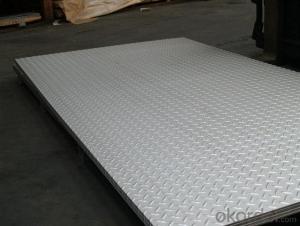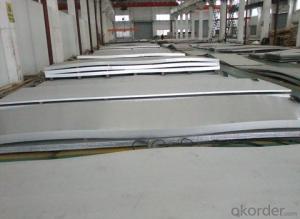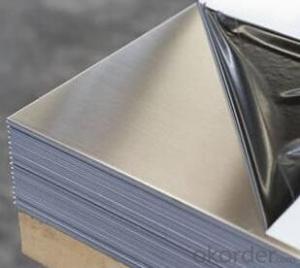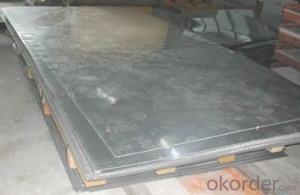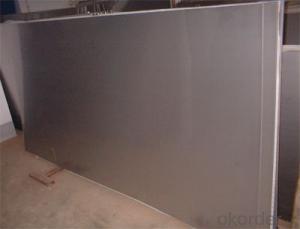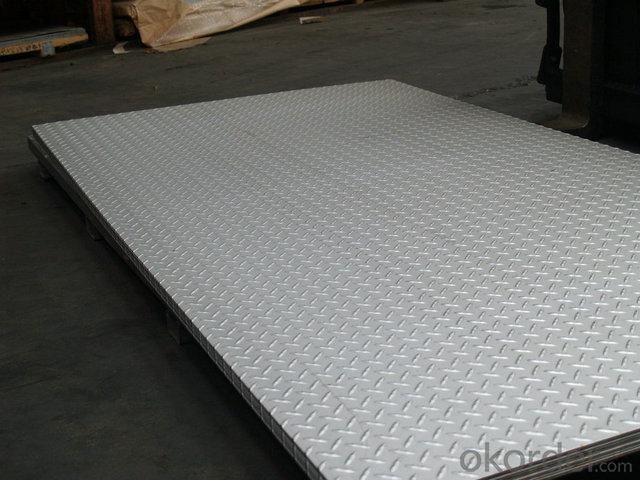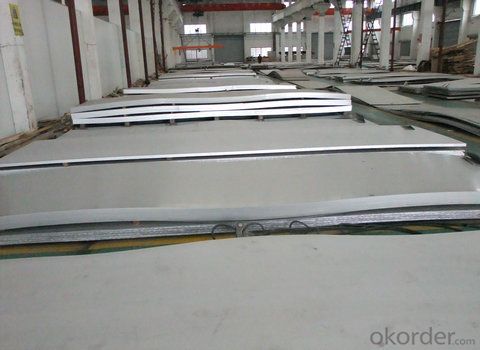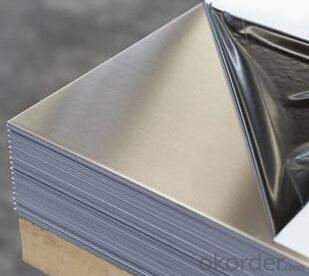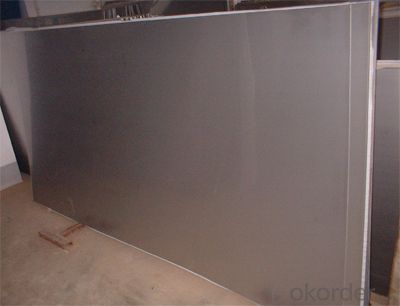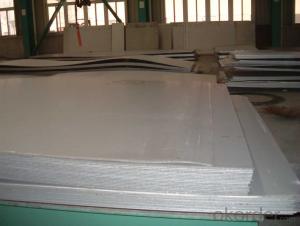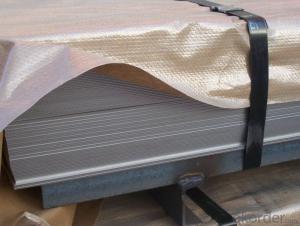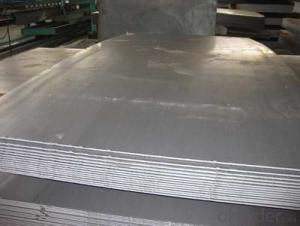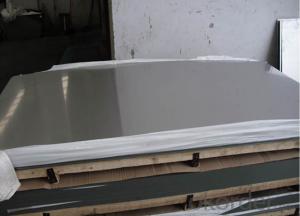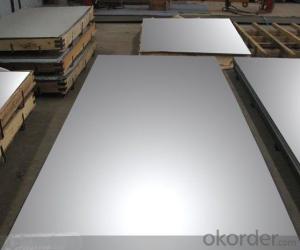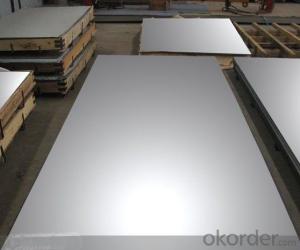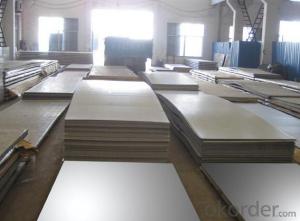Stainless steel plate/sheet 304,201,202,310S,309S,316L,321,304L,410,420,430,44
- Loading Port:
- Shanghai
- Payment Terms:
- TT OR LC
- Min Order Qty:
- 500 m.t
- Supply Capability:
- 5000000 m.t/month
OKorder Service Pledge
OKorder Financial Service
You Might Also Like
Stainless steel plate/sheet
304,201,202,310S,309S,316L,316Ti,321,304L,410,420,430,444,443,409L,904L
| Description | steel sheet,hot rolled steel sheet,cold rolled steel sheet, steel sheet,sheet,steel plate |
| Standard | ASME, ASTM, EN ,BS,GB,DIN, JIS etc |
| Application | Steel sheet applies to construction field, ships building industry, petroleum & chemical industries, war and electricity industries, food processing and medical industry, boiler heat exchanger, machinery and hardware fields. |
| Packaging | Standard export sea-worthy packing |
| Delivery time | 10-30 days |
| Note | Our company has cooperative relation between the domestic agents. Stainless steel sheet can be made accordingto the customers requirements. Fasten delivery. Quality assured. |
| Quality | No.1 |
| Productivity | 1200ton/day |
| Contacts | If you have any question,please feel free contact me. |
Stainless steel sheet surface finish characteristics
| Surface finish | Characteristics and application |
| 2B | The surface brightness and flatness of no2B is better than no2D. then through a special surface treatment to improve its mechanical properties,No2B could nearly satisfy comprehensive uses. |
| No.1 | Polished with abrasive belt of grit#100-#200, have better brightness with discontinuous coarse stria, used as inner and external ornaments for building, electrical appliances and kitchen utensils etc. |
| No.4 | Polished with abrasive belt of grit #150-#180,have better brightness with discontinuous coarse stria, but thinner than No3, are used as bathtub buildings inner and external ornaments electrical appliances kitchen utensils and food processing equipment etc. |
| HL | Polished with abrasive belt of grit #150-#320 on the NO.4 finish and has continuous streaks, mainly used as buildings ornaments elevators, door of building, frontal plate etc. |
| BA | Cold rolled, bright annealed and skin-passed, the product have excellent brightness and good reflexivity like mirror, kitchen apparatus, ornament etc. |
| 8K |
Product Shows :
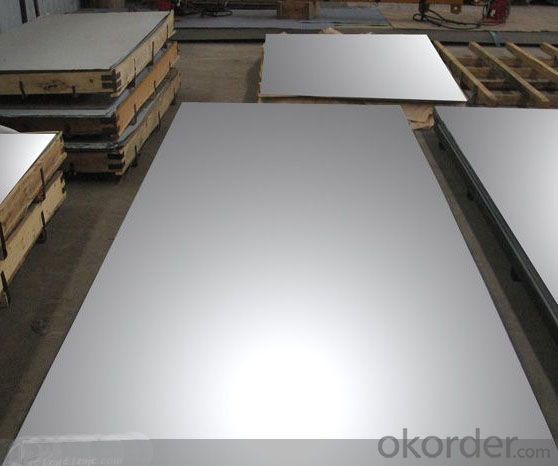

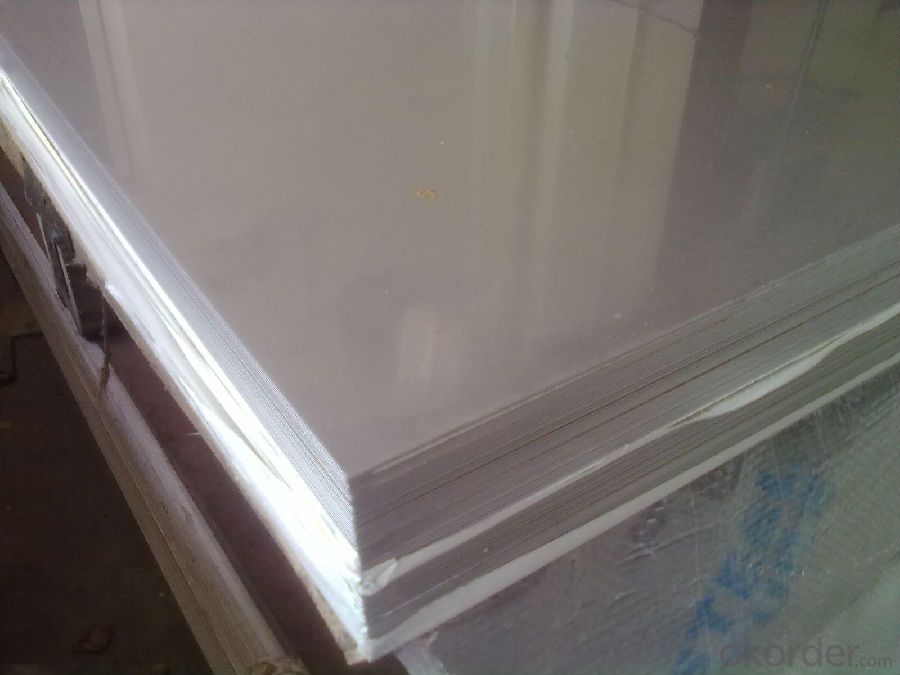
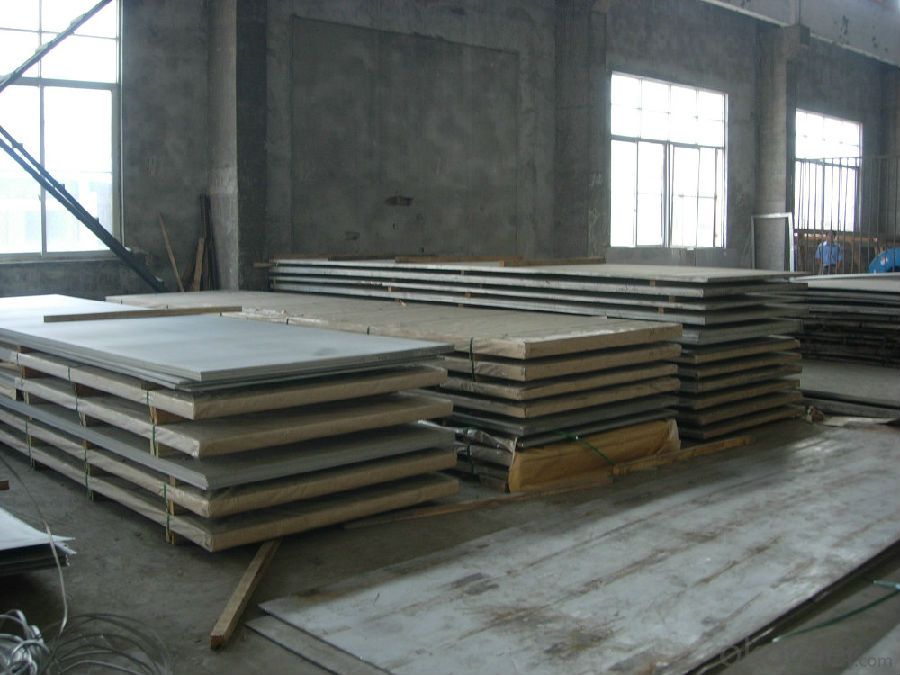

Application :
•Escalator, Elevator, Doors
•Furniture
•Production tools, Kitchen appliances, freezers, cold rooms
•Auto Parts
•Machinery and Packaging
•Equipment and Medical devices
•Transport system
Packaging and Loading

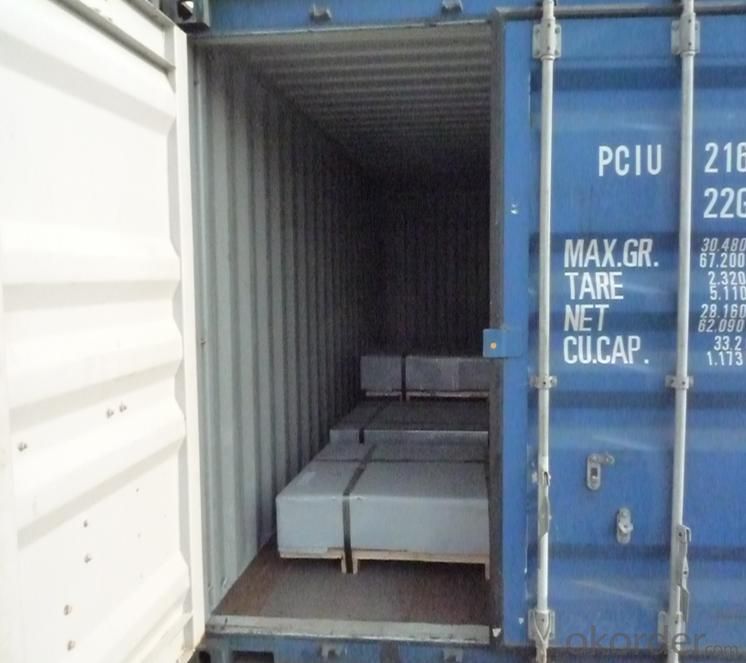
- Q: Can stainless steel sheets be used for fireplaces?
- Yes, stainless steel sheets can be used for fireplaces. Stainless steel is a popular material for fireplace construction due to its high resistance to heat and corrosion. It is durable and can withstand the extreme temperatures generated by a fireplace, making it a suitable choice for both indoor and outdoor fireplaces. Additionally, stainless steel sheets can be customized and fabricated to fit any fireplace design, offering versatility in aesthetics and functionality.
- Q: Can stainless steel sheets be used for decorative elevator doors or panels?
- Indeed, stainless steel sheets are perfectly suitable for adorning elevator doors or panels in a decorative manner. The versatility of stainless steel as a material is unparalleled, as it not only bestows an exquisite and contemporary appearance but also enjoys great popularity for its decorative applications. Its exceptional durability, resistance to corrosion, and effortless maintenance make it an ideal choice for areas with heavy foot traffic, such as elevator doors and panels. Moreover, stainless steel sheets can be tailored to one's specific preferences by incorporating a wide range of finishes, patterns, and textures, thereby offering limitless design possibilities. Whether one desires a sleek and minimalist aesthetic or a more intricate and decorative motif, stainless steel sheets can elevate the visual appeal of elevator doors and panels while providing enduring functionality.
- Q: Are stainless steel sheets resistant to hydrochloric acid?
- Yes, stainless steel sheets are generally resistant to hydrochloric acid. Stainless steel is known for its high corrosion resistance, and it has been found to withstand a wide range of acids, including hydrochloric acid. However, the level of resistance can vary depending on the grade and composition of the stainless steel. In some cases, prolonged exposure to concentrated hydrochloric acid or high temperatures can cause corrosion or damage. Therefore, it is recommended to consult with a stainless steel specialist or refer to the specific stainless steel grade's corrosion resistance chart to determine the suitability of stainless steel sheets for a particular application involving hydrochloric acid.
- Q: Can stainless steel sheets be used for food processing or medical applications?
- Yes, stainless steel sheets can be used for food processing or medical applications. Stainless steel is a highly durable and corrosion-resistant material, making it an ideal choice for these industries where hygiene and cleanliness are of utmost importance. In food processing, stainless steel sheets are commonly used for various applications such as countertops, work surfaces, sinks, storage containers, and equipment. Its non-porous surface prevents the growth of bacteria and makes it easy to clean and sanitize. Similarly, in medical applications, stainless steel sheets are widely used due to their excellent resistance to corrosion, heat, and chemicals. They are used for medical instruments, surgical equipment, implants, and other medical devices that require high levels of cleanliness and sterilization. Stainless steel's biocompatibility and resistance to body fluids make it suitable for implantable devices like pacemakers, joint replacements, and dental implants. Overall, stainless steel sheets are a preferred choice for food processing and medical applications due to their hygienic properties, durability, and resistance to corrosion.
- Q: 904L stainless steel plate generally used in what industry is more?
- Petroleum and petrochemical equipment, such as reactors in petrochemical equipment.* storage and transportation equipment for sulfuric acid, such as heat exchangers.* the main parts of a power plant flue gas desulfurization device are: Tower of absorption tower, flue, screen door, internals, spraying system, etc.. * scrubbers and fans in organic acid treatment systems.* sea water treatment plant, sea water heat exchanger, paper industry equipment, sulphuric acid and nitric acid equipment, acid making, pharmaceutical industry and other chemical equipment,Pressure vessel, food equipment.
- Q: Are stainless steel sheets resistant to UV rays?
- Yes, stainless steel sheets are resistant to UV rays. Stainless steel is known for its durability and corrosion resistance, and this extends to its ability to withstand exposure to UV rays. The chromium content in stainless steel forms a protective oxide layer on the surface, which helps prevent the metal from oxidizing or corroding when exposed to sunlight. This oxide layer acts as a barrier that shields the stainless steel from UV rays, making it highly resistant to the damaging effects of prolonged sun exposure. Therefore, stainless steel sheets are an excellent choice for outdoor applications where UV resistance is a requirement, such as roofing, cladding, and architectural elements.
- Q: Can stainless steel sheets be used for elevator buttons?
- Yes, stainless steel sheets can be used for elevator buttons. Stainless steel is a popular material choice for elevator buttons due to its durability, corrosion resistance, and aesthetic appeal. It can withstand heavy usage, frequent contact, and is easy to clean and maintain. Additionally, stainless steel has a sleek and modern appearance that complements the overall design of the elevator.
- Q: What is the thickness range available for stainless steel sheets?
- The thickness of stainless steel sheets varies depending on the specific type and grade of stainless steel. Typically, stainless steel sheets are available in thicknesses ranging from 0.4mm to 6.0mm. Thinner sheets are commonly utilized for flexible and lightweight applications, whereas thicker sheets are typically employed for structural purposes requiring increased strength and durability. It is worth mentioning that customized thicknesses can be manufactured to meet specific project requirements.
- Q: What are the different types of stainless steel sheet alloys?
- Stainless steel sheet alloys come in various types, each possessing unique properties and characteristics. Below are some of the commonly used types: 1. Austenitic stainless steel, the most widely used alloy, is known for its excellent formability and high corrosion resistance. Industries like food processing, pharmaceuticals, and architecture often use grades like 304 and 316. 2. Ferritic stainless steel, which has a higher carbon and lower chromium content compared to austenitic steel, offers good corrosion resistance and high strength. It finds applications in areas requiring high temperature resistance, such as automotive exhaust systems. 3. Martensitic stainless steel alloys, with higher carbon and lower chromium content than both austenitic and ferritic steels, are valued for their high strength, hardness, and corrosion resistance. They are commonly used in cutlery, surgical instruments, and turbine blades. 4. Duplex stainless steel combines the properties of austenitic and ferritic steels, providing a balance between strength and corrosion resistance. It is widely used in chemical processing, oil and gas, and marine industries. 5. Precipitation-hardening stainless steel is heat treatable and can achieve high strength and hardness through a precipitation-hardening process. It is critical in aerospace and defense applications that require both strength and corrosion resistance. These examples represent only a fraction of the available stainless steel sheet alloys. The choice of alloy depends on specific application requirements, such as corrosion resistance, strength, and temperature resistance.
- Q: What is the maximum thickness available for stainless steel sheets?
- The specific grade of stainless steel and the manufacturing capabilities of the supplier can cause the maximum thickness of stainless steel sheets to differ. Nevertheless, stainless steel sheets are commonly available in thicknesses ranging from 0.5mm to 80mm. It should be emphasized that thicker sheets are typically utilized for specialized purposes that demand heightened strength and durability, like construction projects or heavy machinery. To ensure the desired thickness is obtainable, it is essential to carefully consider the intended use of the stainless steel sheets and seek advice from a reputable supplier.
Send your message to us
Stainless steel plate/sheet 304,201,202,310S,309S,316L,321,304L,410,420,430,44
- Loading Port:
- Shanghai
- Payment Terms:
- TT OR LC
- Min Order Qty:
- 500 m.t
- Supply Capability:
- 5000000 m.t/month
OKorder Service Pledge
OKorder Financial Service
Similar products
Hot products
Hot Searches
Related keywords
